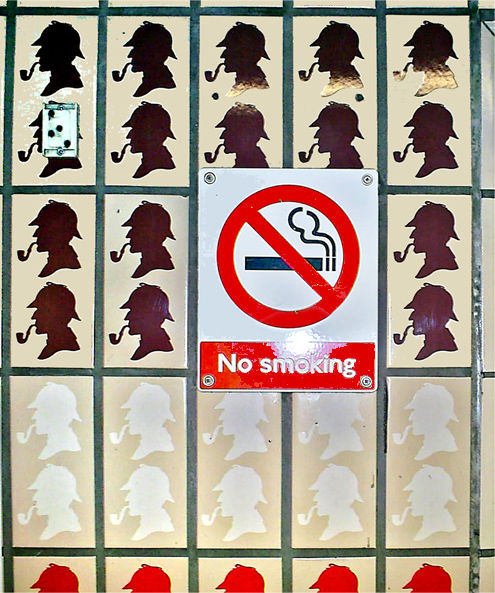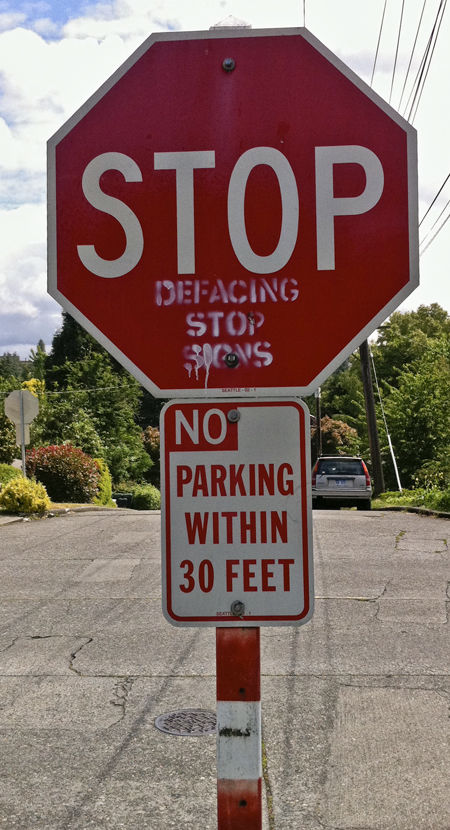Empathy
Communication: Oh, the Irony
How we use irony in communication, and why it matters.
Posted February 10, 2020 Reviewed by Lybi Ma
As the great British comic, Ricky Gervais once implied, England and America may not so much be divided by a common tongue, but by their distinctive use (and in the case of the Brits, their abuse) of irony. As he puts it in his article in Time:
“There’s a received wisdom in the U.K. that Americans don’t get irony. This is of course not true. But what is true is that they don’t use it all the time. It shows up in the smarter comedies but Americans don’t use it as much socially as Brits. We use it as liberally as prepositions in everyday speech. We tease our friends. We use sarcasm as a shield and a weapon.”
The origins of irony
The Danish Ambassador to the UK raised eyebrows, and hit the headlines, back in 2014, when he claimed the great British sense of irony, in fact, came from the Vikings. He reportedly suggested that it was the Vikings who “brought a sarcastic sense of humour to Britain.” While the thought of ferocious Norsemen taking a break from their pillaging to educate the locals in how to be funny maybe too much for some, the modern rhetorical concept of irony can, in fact, be traced back to ancient Greece.
Irony derives from a stock character in ancient Greek theatre. The Eiron was a comedic character who used understatement to triumph over their more bombastic opponent.
Oh, the irony
Irony, in its most simplistic form, is saying the opposite of what you mean. I am being ironic when I congratulate my marketing friend for an epic marketing fail (illustrated below) with the words: ‘Hope is fifty yards ahead? Wow, great ad placement, mate!’ And if I continue with the humiliation—‘You deserve a bonus!’—I’m deploying a more specific kind of irony, sarcasm, where the irony is aimed at an individual, rather than a situation.
The role of irony in communicating empathy
While we use irony for humorous effect, we also deploy it to establish empathy. People respond better to criticism if it’s delivered ironically, as this softens the blow. For instance, many of us have stories about inadvertent ‘reply to all’ email embarrassments. An acquaintance once sent an email ‘reply to all’, in response to a female co-worker’s mass email notifying the company about her change of surname. His reply was ‘Congratulations’. The only problem, however, was that the name change was due to divorce, not marriage; the co-worker was reverting to her maiden name. His faux pas drew an ironic response from his boss: ‘Well judged there, buddy.’

The reason that irony works to soften criticism is because of its ability to tinge what is actually meant, with what is literally said. Saying ‘well done’ or ‘great job’ in response to poor work allows some of the positive sentiment of the words to rub off on the implied criticism. But this ability of irony works in both directions. For this reason, a compliment can be downgraded if delivered ironically, as the irony tinges the implied positive sentiment with the negative assessment that’s actually uttered. For instance, telling a record-breaking salesman, ‘You’re the worst ever!’ reduces the effect of the compliment and can even sound snide or envious.
Irony in digital communication
In the realm of textspeak, without ready access to the non-verbal cues that we often draw upon to interpret irony, miscommunication is rife. An addressee might, without the empathy-inducing non-verbal cues, interpret an ironic expression literally or, vice versa, a literal expression ironically. And this can lead to inadvertently getting your addressee’s back up. But here, Emoji can help.
Recent research has shown that using visual representations of faces, notably the wink and the joking face (with one eye closed and the tongue sticking out), which are the most commonly used emojis to signal irony, can help avoid miscommunication in textspeak.
In a study at Nottingham University, in England, 192 students were given text messages to read. For some of the messages, context was provided: ‘Tanya had noticed that Jenny had put on a lot of weight’, making it clear that the ensuing message, from Tanya to Jenny, was meant sarcastically: ‘I see the diet is going well.’ In others, there was no context, resulting in a message that was ambiguous between literal versus sarcastic interpretations.
Participants were then asked to judge whether a sarcastic or literal meaning was intended. While some subjects were shown messages without a sarcasm marker: a wink or a joking face emoticon – typographically produced faces were used, such as ;-) (wink) or :-p (tongue sticking out), rather than emojis – others were presented with sentences with emoticons signaling sarcasm. The results were clear: without a sarcasm marker, ambiguous messages tended to be interpreted literally. But with sarcasm markers, ambiguous sentences were more likely to be taken as sarcastic.
In terms of avoiding miscommunication in textspeak, the conclusions are clear. As sarcasm has a tingeing effect, thereby flipping the sentiment of the words, emojis should be used with care. They can be used to help show, in textspeak, when you’re being ironic. But if you want your words to stand at face value, to literally praise or criticise, emojis are best avoided.
But this all leads to one final thing. Given the myriad ways in which we signal irony in the age of Emoji, which emoji is best? To find out, one intrepid writer, for the social media content company Crocstar, asked Twitter exactly this: ‘Emoji-loving friends. Please tweet me the emojis you use when you want to show you’re being sarcastic (it’s for a blog post).’ Twitter duly responded.

From the smirking face and the eye roll, to the unamused face, and the upside-down smile, Emoji enables carefully calibrated irony, providing a spectrum of sarcastic markers suitable for any occasion.
Situational irony
While I’ve been discussing verbal or linguistic irony, a second genre of irony is situational in nature, and relates to a situation or event that is simultaneously oppositional, and hence, humorous. For instance, in the image below, a ‘No-smoking’ sign appears on the wall of the Baker Street tube station in London, pinned over an image of a smoking Sherlock Holmes—arguably the most famous (albeit fictional) resident of Baker Street.

Similarly, in the next image below, graffiti on a stop sign, with the admonishment that stop signs should not be defaced, is another instance of situational irony.

Indeed, many of the situations famously described in the Alanis Morrisette song, Ironic, relate to situational irony.
Dramatic irony
A final kind of irony is often referred to as dramatic or tragic irony. This is often deployed in literature, especially drama, and involves the notion of a so-called double audience. For instance, one of Shakespeare’s most notorious villains goes by the moniker of “honest Iago”. In the Shakespearean tragedy, Othello, Iago reveals himself, to the audience, in his soliloquies to be thoroughly dishonest, plotting the downfall of his master, the great Venetian General: Othello. But within the dramatic world of the play, Iago has a reputation for, and takes great pains to maintain an appearance of honesty. Because there are two “audiences”, the players, and those watching the play, and only the latter are exposed to Iago’s confessions in his soliloquies, it is solely the watching audience who is aware of the full facts. Those watching are alone in understanding that Iago’s “honesty” is, in fact, a pretense, and will lead to tragedy, while the players continue to congratulate Iago on his honesty until his deception is revealed in the final tragic act.




